What are the different types oftrimming and profiling router cutter? |
||||
 |
||||
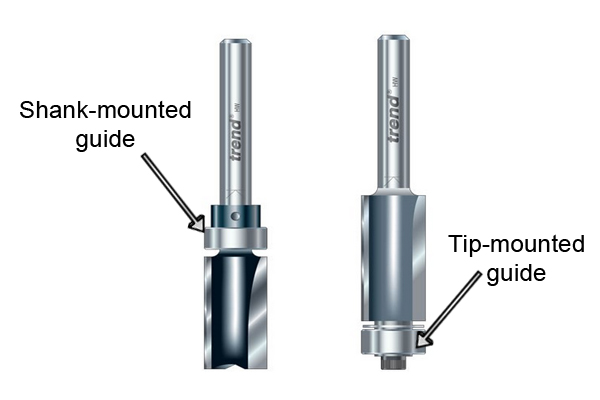 |
There are two main types of trimming cutter: those with a shank-mounted guide and those with a tip- or bottom-mounted guide. Both can be used to trim the top or bottom layer of a workpiece, depending on whether they are used in a router table or hand-held router. |
|||
|
You will find a large selection of different trimmer and profiler cutters in the Professional TCT range, as well as across Trend’s other ranges. Trade range trimmers and profilers all have the Trade PTFE coating, the CraftPro range contains a good selection of trimmers and profilers, the HSS Professional range carries two dedicated laminate trimmers, and the Replacement tip range also has a decent selection of trimmers alongside three profilers. |
||||
Trimming router cutters (bottom guide) |
||||
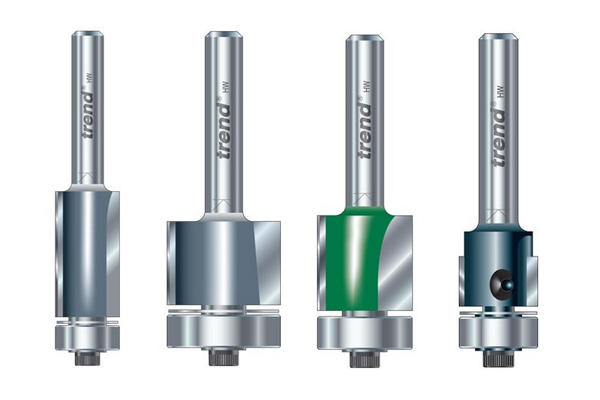 |
These cutters have their guide mounted on the end of the cutter, below the cutting edges. |
|||
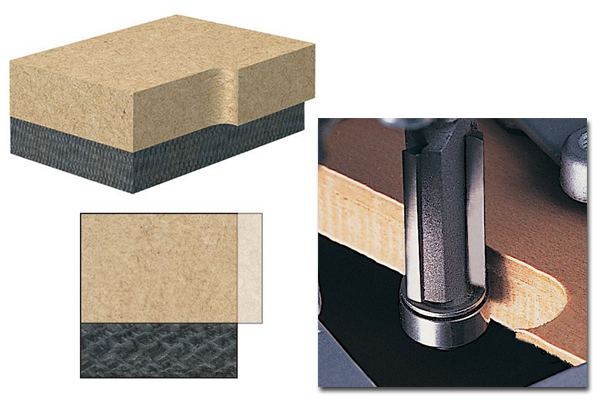 |
When used in hand-held mode, the guide will ride along the bottom layer of material, allowing the cutter to trim the top layer to follow it.
Trimming cutters are often employed in this way to trim lippings (usually laminate or hardwood) flush with the edge of the workpiece. |
|||
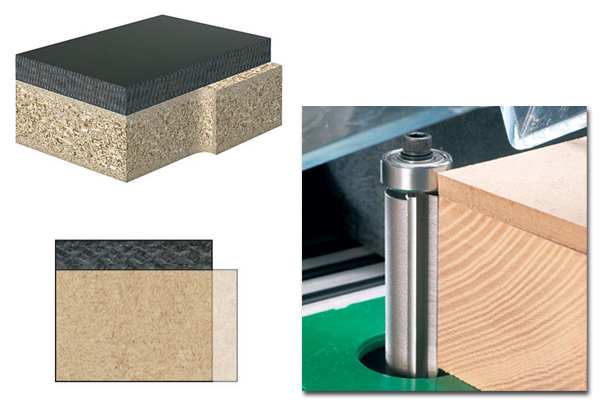 |
When used in a router table, the guide will ride along the top layer of material, allowing the cutter to trim the base layer flush.
Trimming cutters are often used in this way when shaping material with a template. |
|||
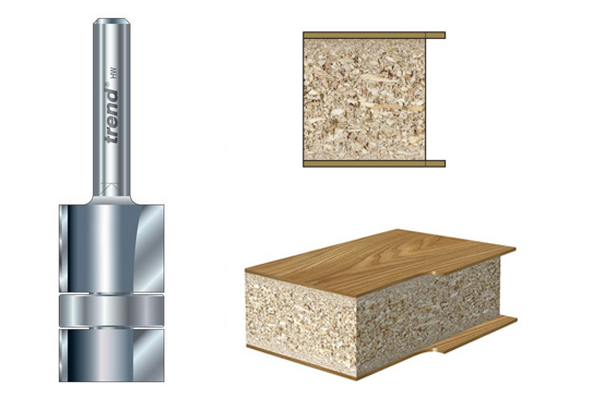 |
Double overlap trimming router cuttersSome 90-degree double guided trimmers are overlap trimmers and have two lots of cutting edges with a bearing guide in between them.
They are designed for use on boards which have been faced on both sides with a material that must be trimmed flush with the central layer. |
|||
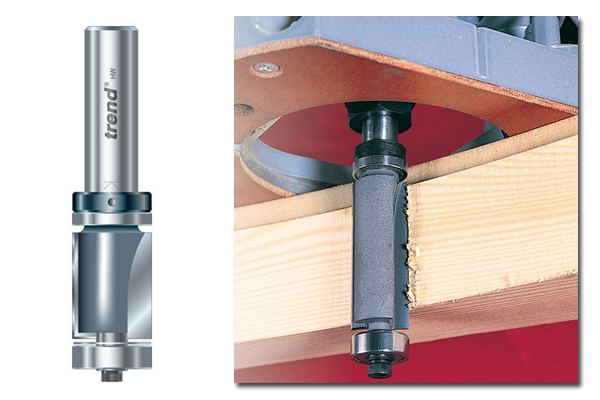 |
Double-guided trimming router cuttersOther Professional TCT 90-dgree double-guided trimming cutters have bearing guides fitted to both the shank and end of the cutter. This allows a template to be placed on the top or the bottom of a material, for ease of routing. The CraftPro range also includes and double guided trimmer. |
|||
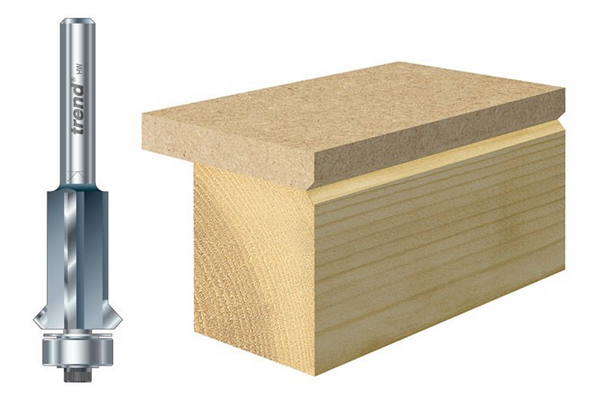 |
Trimmer and V-groove router cuttersOne special type of trimming cutter has an angled section at the bottom of its cutting edges which is designed to cut a V-shaped groove along the join between two boards, in order to hide the glue line. |
|||
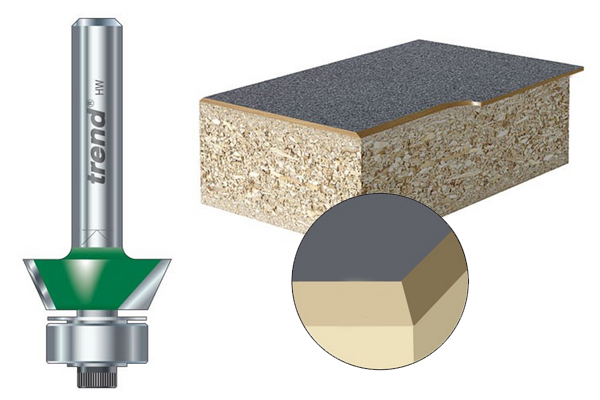 |
Bevel trimming router cuttersBevel trimmers have angled cutting edges in order to bevel the edges of a piece of material. Bevel trimmers come in the form of Professional TCT bevel laminate trimmers and combi and bevel laminate trimmers, CraftPro bevel trimmers, and Rota-Tip bevel trimmers. |
|||
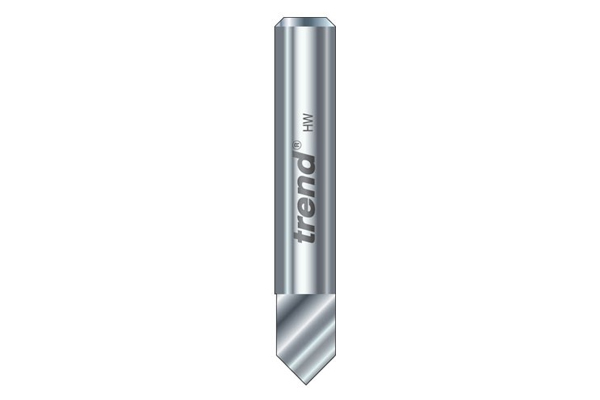 |
Economy laminate router trimmersThese router bits are used only for trimming timber and plastic laminate, and only in short, straight passes. They come in a small variety of shapes, for producing slightly different cuts. |
|||
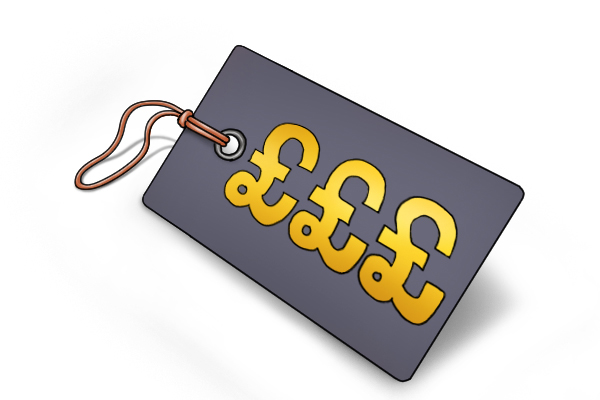 |
They are cheaper than other trimming cutters, and yet still constructed of Solid Tungsten carbide, but it's usually worth aiming for something a little more expensive in the long run if you want to get a little more versatility and longer life out of your tools. |
|||
Profiling router cutters (top bearing)
|
||||
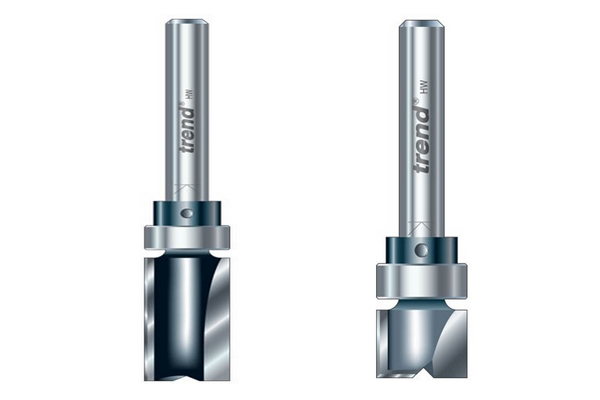 |
Profiling cutters have their guide mounted on the shank. You'll find a range of dedicated profile cutters from the CraftPro range, Replacement Tip range, and Trade range. Profilers from the Professional TCT range comprise of template profilers, oversize cutter profilers, and a profiler rebater trimmer that has two guides. |
|||
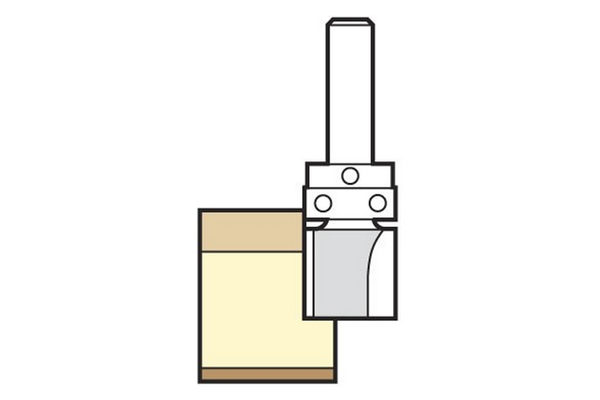 |
When used profilers in hand-held mode, the guide rides along the top layer of material, allowing the cutter to trim the base layer to follow it.
Profiling cutters are often used in this way when shaping material using a template. |
|||
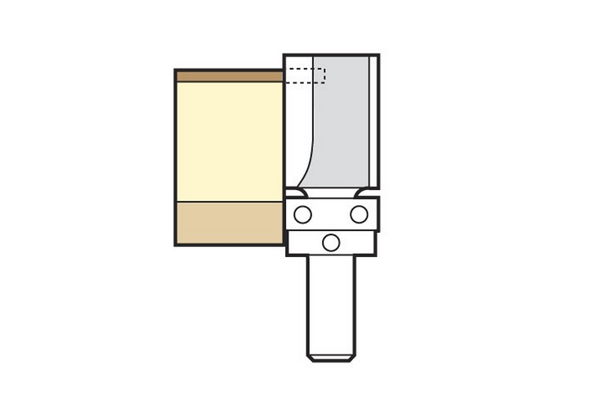 |
When used in a router table, the guide rides along the bottom layer of material, allowing the cutter to trim the top layer to follow it.
Profiling cutters are often used in this way to trim lippings (usually laminate or hardwood) flush with the edge of the workpiece. |
|||
What are the different types ofspecialist trimming & profiling cutter? |
||||
Pierce and trim router cutters |
||||
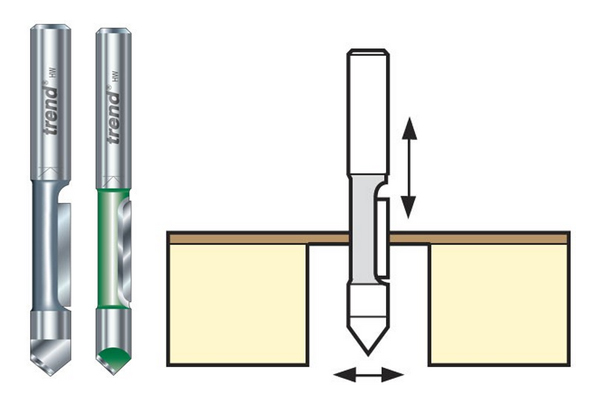 |
Pierce and trim cutters are most commonly used to cut laminate once it has been applied to a worktop or similar item, they're often referred to as laminate pierce and trim cutters. In particular, they are used for plunge cutting the face of the laminate in order to cut internal apertures when fitting basins, hobs and other inset units. |
|||
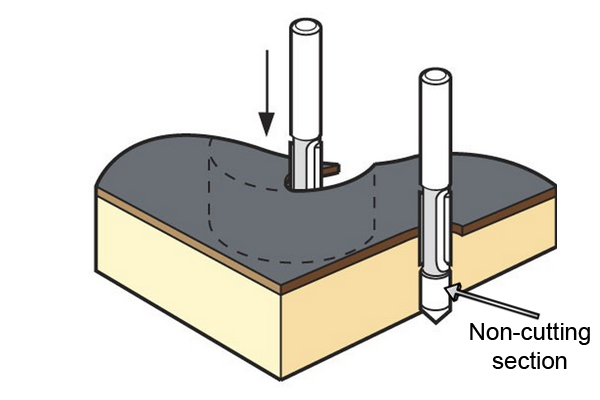 |
Above their cutting tip is a non-cutting section similar to a guide pin which allows them to be used like a regular trimming bit to cut back the excess material of a top layer (usually laminate) so that it’s flush with the material beneath. |
|
||
 |
||||
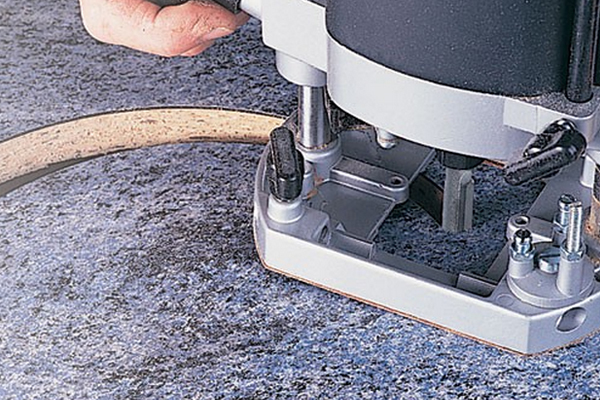 |
They also have a sharp cutting tip which allows them to pierce the surface of material from above. This is useful when cutting laminate that has been placed over an aperture (e.g. a hole for a basin). The pierce and trim cutter pierces through the laminate, then the non-cutting guide follows the inside edge of the aperture to allow the cutter to trim back the laminate. |
|||
|
HSS pierce and trim laminate cutters are either self guided with straight blades or have spiral flutes for use with aluminium faced panels that are commonly used in the caravan industry. The CraftPro range produce two pierce and trim cutter with either an 8mm or ¼” shank diameter, and the Professional TCT range has a selection of pierce and trim cutters. |
||||
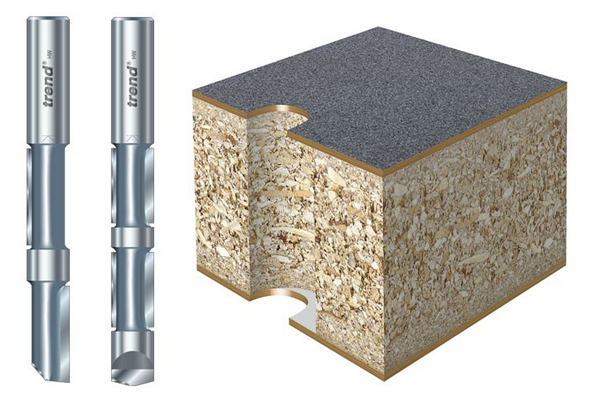 |
Double pierce and trim router cuttersWhen applying laminates it is common practice to apply a balancing veneer or laminate to the reverse face to prevent bowing. There are double pierce and trim cutters (also called combination pierce and trim cutters) which can cut both the top and bottom laminates simultaneously. |
|||
Combination router trimmers and chamfer trimmers |
||||
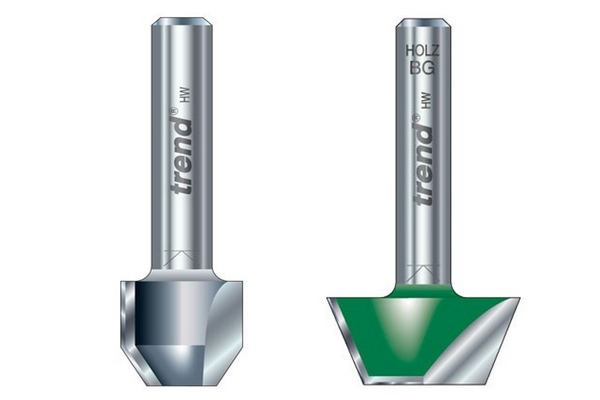 |
Combination trimmers, also called “combi cutters”, have beveled sides which straighten out towards the top. Chamfer trimmers resemble bevel trimmers but without guides. Instead, they have a cutting edge located across their end which allows them to cut into the surface of materials. |
|||
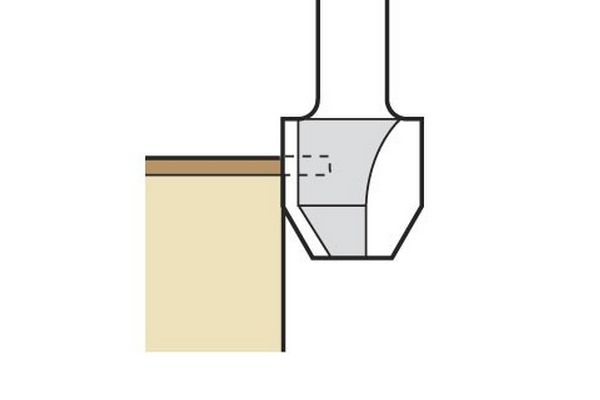 |
They are often used to perform several functions:
1. Trim the top layer of a material flush with the board beneath |
|||
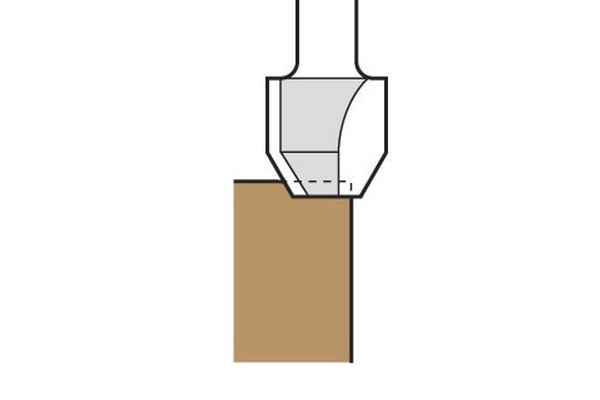 |
2. Trim the surface material ("upstand"), using their bottom-cutting edge |
|||
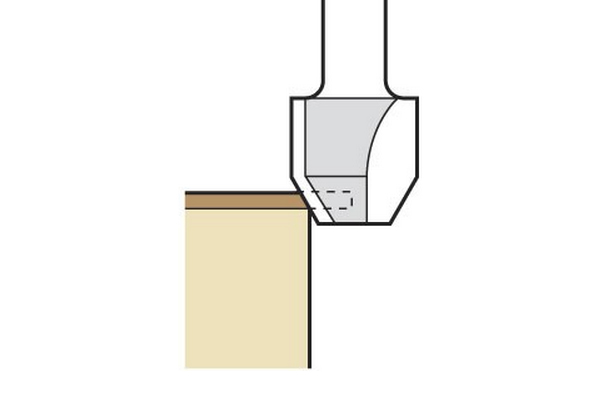 |
3. Bevel the top layer at an angle
Please note: combination trimmers do not always have guides, they sometimes require the use of a side fence or clamp guide to ensure accuracy. |
|||
Flush router trimmers
|
||||
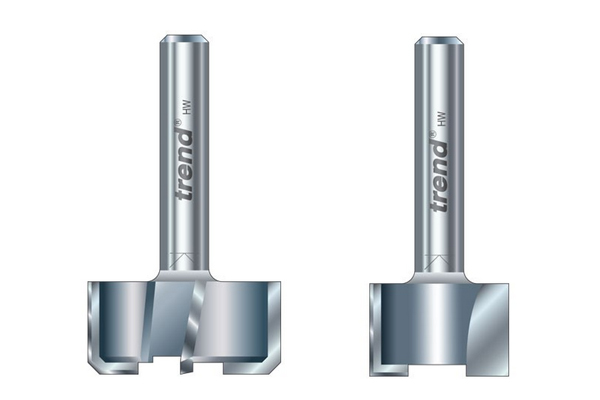 |
Flush trimmers are usually quite wide in appearance, with cutting edges that extend across the bottom of the cutter, allowing them to trim the surface of materials. |
|||
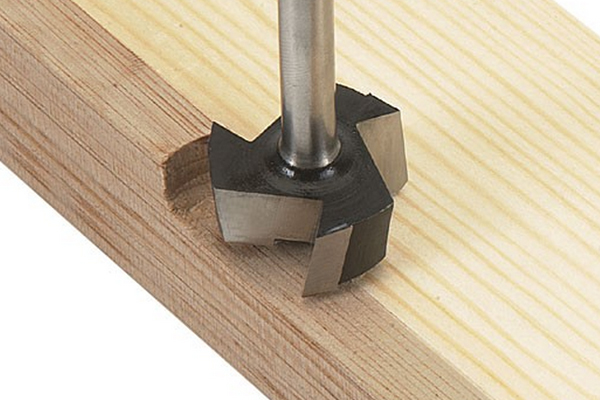 |
Flush trimmers are most commonly used after materials have been joined at their edges, in order to trim the surfaces flush with one another. A typical example would be trimming hardwood or plastic edge strip so that it’s flush with the adjoining material. |
|||
Overlap router trimmers |
||||
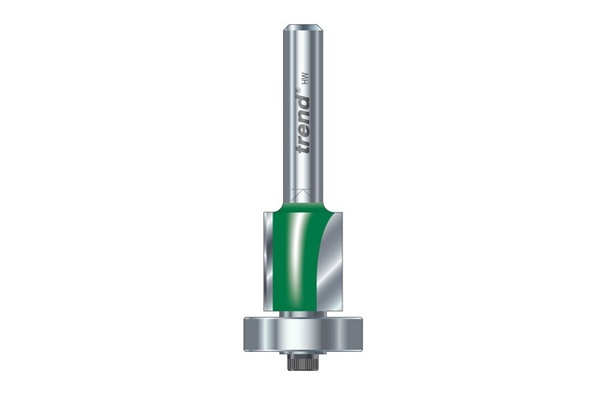 |
Overlap trimmers are designed for rough work where there is a lot of laminate to be trimmed from the top of a worktop. They will cut off excess material to a distance of 3mm, as the oversize bearing at the tip of the bit holds the cutting edge away from the workpiece by that distance. |
|||
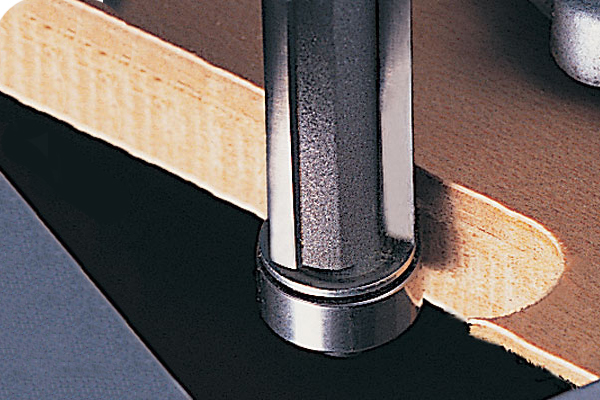 |
The laminate can then be trimmed flush with a standard trimmer cutter. You'll find an overlap trimmer in the Professional TCT range and two in the CraftPro range, with shank diamters of 8mm and ¼”. |
|||
Profile rebaters and trimmers |
||||
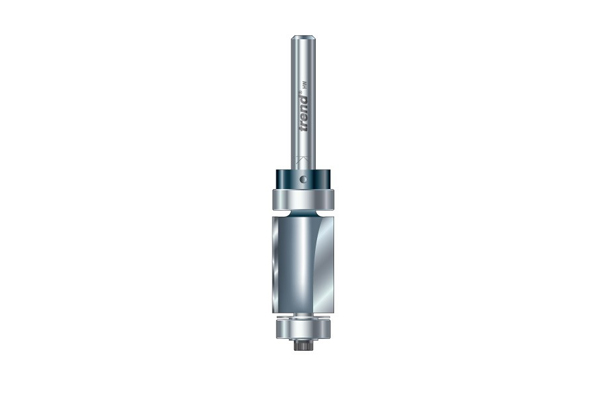 |
Profile and rebater trimmers have guides on the shank and the tip. This means it is even easier to keep the bit from deviating off course during use, and makes the tool ideal for working with damaged worktops with a slightly uneven edge at the top or bottom. |
|||
Door leading edge profiling router cutters and undercut profilers |
||||
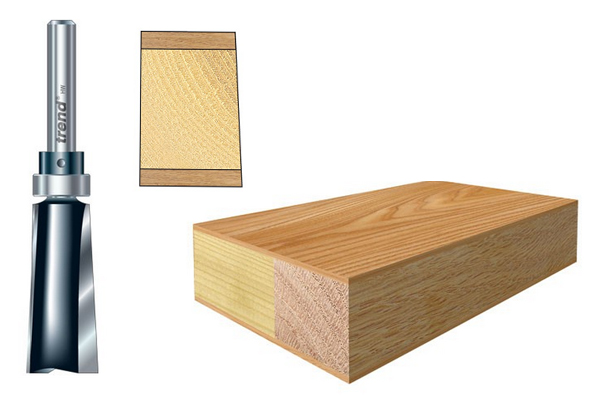 |
Door leading edge cutters and undercut profilers have a shank-mounted guide and flared cutting edges; they are designed to bevel the leading edge of doors by 3 degrees.
The leading edge of a door is the one opposite the hinge and must be bevelled in order to fit to fit tightly against the jamb, which is the vertical section of the doorframe. |
|||
 |
||||









